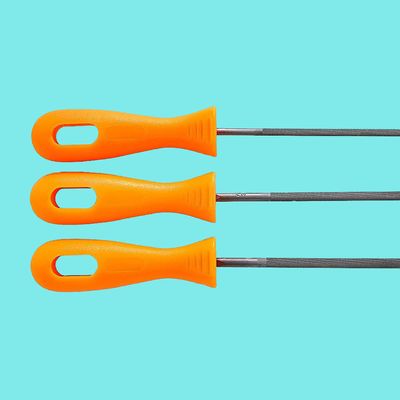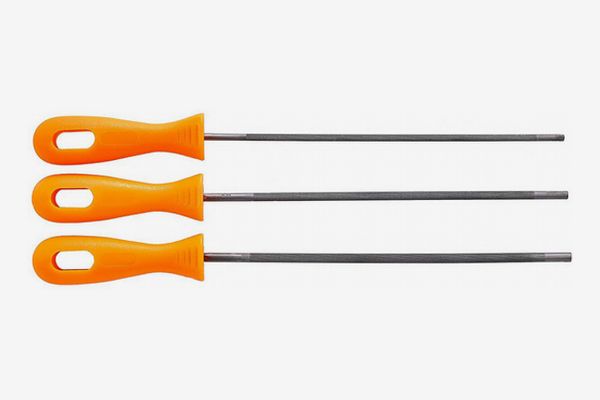
For a long time it didn’t matter how dull our old Wusthof bread knife got, we used it anyway. Condensing loaves of bread to half of their intended height. Chewing tomatoes into pulp. Although I can take care of most of our other knives with a whetstone and oil, I had no idea how to handle that bread knife. Once I thought I’d solved the problem: I tried to drop the knife off at the kitchen store and ask them to sharpen it. They gave the knife right back to me. “We don’t do serrated knives,” they said. I thought I was stuck until my friend Roy, a longtime handyman and outdoorsman, recommended a chainsaw file.
Chainsaw files have extremely fine grooves that allow you to create a very sharp edge. More important, the rounded edges that let them fit into the links of a chainsaw blade will also slide perfectly into the gullets — the scalloped parts — between the teeth of serrated knives. The key is working slowly. This is an aggressive file. Use too strong of a hand, and you’ll ruin your knife. But if you are careful, here’s how to sharpen a serrated knife —and to make it as sharp as, well, a chainsaw.
Here’s how to do it:
First you need to choose the right file size for your knife. This Vector Tools set comes with three sizes — 5/32”, 7/32”, and 3/16” — and should work with most knives. With the file resting on top of the gullet, you want to be able to see just a little bit of the edges of the gullet behind the file. On the rare occasion that you find that your gullets are bigger than your biggest file, you can make multiple passes, working horizontally across the gullet, one stroke at a time. The most important thing is that the file not be larger than the gullet. That can enlarge the gullet itself and start taking metal from nearby teeth, which is a good way to throw off the balance of the knife.
Most serrated blades are sharp on only one side. With that side facing up and the blade facing away from you, rest the chainsaw file in one of the gullets. Hold the file a little bit off of the surface of the knife, at a 12- to 17-degree angle. Then gently push the file through the gullet. The motion is almost like pushing a threaded needle through fabric. A few times is plenty. Work down the length of the knife, then file off any burs that may have formed by sliding a sharpening stone along the flat side of the knife.
I do this about once a year now with our bread knife. And after each time, I make sure to warn my wife, because the knife gets ruthlessly sharp. It can definitely handle a tomato again. Or a bagel. And probably a small tree.
The Strategist is designed to surface the most useful, expert recommendations for things to buy across the vast e-commerce landscape. Some of our latest conquests include the best acne treatments, rolling luggage, pillows for side sleepers, natural anxiety remedies, and bath towels. We update links when possible, but note that deals can expire and all prices are subject to change.






